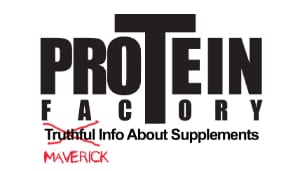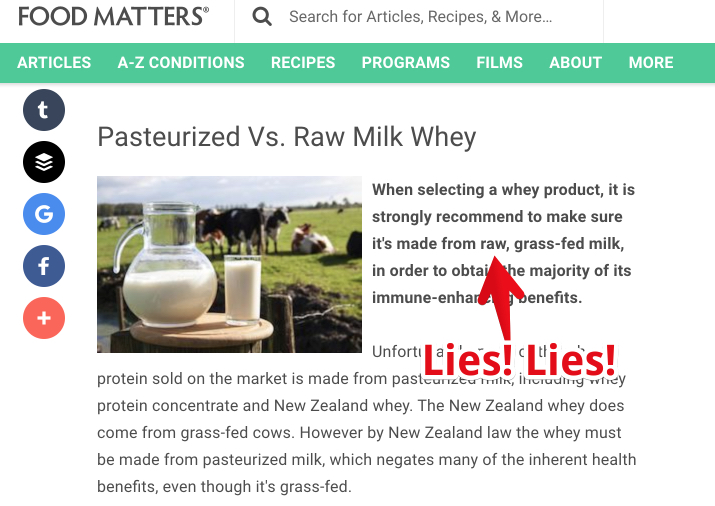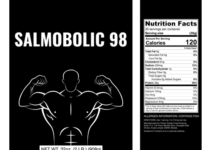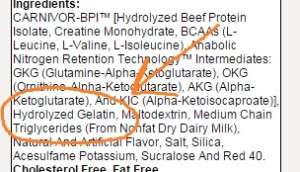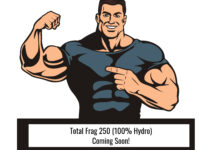If you’re a reader of my site you will know that you will not find better and more info on protein powders anywhere on the internet. Even though the Google search algorithm disagrees and feels some websites are better than mine I beg to differ. When you Google “Best Whey Protein“, you get nothing but websites trying to sell you protein powders made for the mass market. Take a look at this bogus website, with bad information and actually WRONG information they give their readers that I found on the first page of Google…
This moronic website rated Dymatize whey protein as their favorite. But again, if you are a reader of my site you’ll know that even though hydrolyzed whey protein is a great protein, you MUST know the molecular weight average of that particular hydrolyzed whey protein. If you don’t then that would be like buying a diamond and not knowing the carat size. Or buying a car and not knowing how many the cylinders the engine has, or buying gasoline and not knowing the level of octane…. Get my drift?
Next they tell you their third favorite is a protein that contains waxy maize. I have written about this before because waxy maize is a GIANT scam. Why a supplement company would put waxy maize in their protein powder is beyond me. However, I can tell you that the reason they do it is to try to sucker in the newbie’s that think waxy maize will help them build muscle.
It is reasons like this that the supplement companies can continue to push lower quality whey protein powders to consumers and consumers think they are getting the “Best Whey Protein”. Companies like mine, well, I speak the truth and give my readers THE BEST information about protein powders that I can publish. That why it is important that you try to Facebook share my articles when you can. This next information about protein powders you most definitely going to want to share on Facebook. If you are into whey protein technology you are going to love this.
About 6 years ago I created the world’s first natural myostatin inhibitor supplement. The product contained follistatin which is a natural myostatin inhibitor. Myostatin inhibits muscle growth. Follistatin is naturally occurring in fertile eggs. I found a way to process the eggs to keep the follistatin intact and make it in a deliverable form to the consumer. This process could also be used for whey protein. However, I did not pursue this process to manufacturing whey protein this way. A did not pursue it for a few reasons. #1 I felt the cost outweighed the benefits. Whey protein is one of the best protein powders for muscle building. It also contains naturally occurring protein peptides and subfractions that are beneficial. The main one being IGG or immunoglobulin G. This protein subfraction helps with the immune system amongst other things. However just because you consume tons of IGG does not mean you are going to start putting on slabs of muscle. The second reason I did not pursue this process was because whey protein, even in its raw form, which would be direct from cows milk, does not contain anything “special”, that is going to increase muscle mass. Meaning even if you did somehow start chugging down whey protein make from raw cow’s milk you are not going to start putting on tons of muscle mass. Keep in mind however that from a quality stand point and overall body health it was definitely be a better protein than what is commercially available.
Keep in mind that there is no such thing as whey protein from raw milk. This is a marketing lie that companies selling whey protein use to dupe potential buyers into purchasing their protein powder. Here is an example I found.
There is no such thing as raw whey protein, so why are they telling you to make sure you find a whey protein from raw milk?
Technology advances at a rapid rate, especially nowadays. I think it will even increase at a faster pace now that artificial intelligence is being to arrive. Food technology also advances, which mean we have better ways to manufacture food products, including whey protein.
Recently one company has made a significant advancement in whey protein manufacturing technology. They have developed a manufacturing process to avoid the heat steps needed to make whey protein. Let me make one important point here.
[clickToTweet tweet=”Recently a company has made an advancement in whey manufacturing technology & developed a way to avoid the heat steps” quote=”Recently one company has made a significant advancement in whey protein manufacturing technology. They have developed a manufacturing process to avoid the heat steps needed to make whey protein. “]
ALL WHEY PROTEIN IS SUBJECTED TO HEAT PASTEURIZATION!
Do not fall for any supplement companies lies when they try to sell you that their whey protein powder is
- made by cold pasteurization
- low temp filtration
- cold filtration
- raw processed
- or anything similar
All whey protein powders must undergo heat pasteurization at the same time and temperature to kill the potential bacteria that may be present in the whey protein. If not, the consumer could be subjected to bacteria that could literally kill them. I’m sure you’ve heard of e coli and listeria? These are very harmful bacteriums that could have serious negative health consequences. Therefore ALL whey protein is subjected to the heat that is needed to kill this bacteria.
This heat does indeed reduce the beneficial protein subfractions like IGG in whey protein. However, it does not completely eliminate them like some supplement companies claim. IGG is present in all whey protein powders. Native whey protein because it skips the cheese process has more IGG than regular whey protein. But native whey protein still must go through heat pasteurization. Back when I was inventing the natural follistatin powder, I discovered a new technology that kills bacteria in food products without using heat. The process was called high-pressure pasteurization. This process uses high pressure to literally crush the bacteria and kill it. And because it does not use it, it does not destroy the beneficial nutrients found in food products. This is the process I used to make the natural occurring follistatin powder. I had to travel to Germany to get this done because the US government does not allow egg products to be sold to consumers using this process. Then after I used high pressure pasteurization to kill the bacteria in the fertile egg yolk liquid, I used freeze drying to convert the liquid into a powder. This was an expensive process, but it did create a product that I still feel is worth trying. Keep in mind this though. I have taken a TON of this follistatin powder and I was disappointed with the results. This product is not going to help you put on a ton of muscle. I think this powder is good for anti-catabolic effects and not for anabolic. If you with to maintain muscle mass, this product is a good choice.
After I finish this project I did think about making whey protein using the same process. But I did not pursue it because of the cost. I calculated that if I made a whey protein powder using the process it would result in a $100.00 or more per pound cost to the consumer. Nobody, including myself is going to pay that much for whey protein. For that price it better put on slabs of muscle, and in reality, it will not.
The good news is, as I have mentioned above that one company has developed a new process to commercially produce whey protein that does not use heat pasteurization. Currently, they are waiting for the government to give them clearance that they are allowed to sell this product. The US government needs to give its approval on if they feel the “kill step” is adequate to keep the consumer safe. Hopefully, they will and in 2018 you should be able to buy it.
We have some questions that need to be answered though:
Will this new form of whey protein build more muscle than regular whey protein and native whey protein?
Will this higher quality protein powder outweigh the cost over native whey or regular whey?
Will the nutrients that get reduced from heat pasteurization, and now are increased in this new whey protein help increase muscle mass and overall health?
If I look into my crystal ball I would predict the following:
- That this new whey protein powder, will not be something that the consumer is going to be rushing to the store to buy it.
- If studies on muscle growth are done on it, comparing this new whey protein vs regular whey protein, I don’t see significant results that will make muscle building seekers spend big bucks on.
- Consumers looking for “healthier” whey protein would likely purchase this new whey protein
- The cost is going to be about $15.00 to $20.00 per pound.
- You will not see this new whey protein on the shelves of GNC, Wal-mart, or other mass retailers. It is just to expensive and does not fit the “profit margin” criteria for these big mass retailers.
When this powder, which should come out in the first half of 2018 is ready for sale, my recommendation would be to use this protein powder in cycles or in small amounts.
Something like this
10 grams of casein
10 grams of whey isolate
5 gram of bio serum
5 grams of this new whey protein
Granted if you do not have a budget I would replace old whey protein with this new whey protein. Without question, this new whey protein will be the highest quality available as far as whey protein concentrates are concerned. The powder needs to be sourced from grass fed cows as well to appeal to this market segment.
Side Note: I SHOULD be the first company to introduce this new whey protein and everyone else will just copy me. I want to make this announcment now to prove to my readers that Proteinfactory.com continues to be the most innovative supplement company in the world. Everyone else comes in second place.
The next new protein powder is one that I will be introducing for sale this Cyber Monday. I wrote an article about it here. It will be the world’s first whey/casein phytosterol free protein powder. Look for the product page on November 27th
Alex Rogers is a supplement manufacturing expert. He has been formulating, consulting, & manufacturing dietary supplements since 1998. Alex invented protein customization in 1998 & was the first company to allow consumers to create their own protein blends. He helped create the first supplement to contain natural follistatin, invented whey protein with egg lecithin, & recently imported the world’s first 100% hydrolyzed whey.
